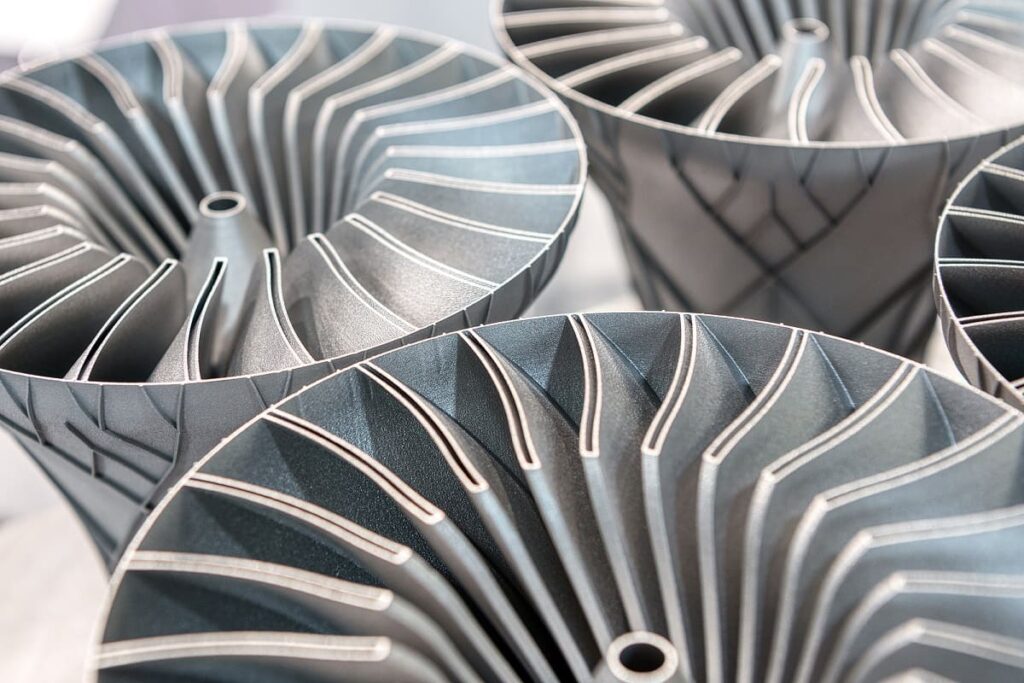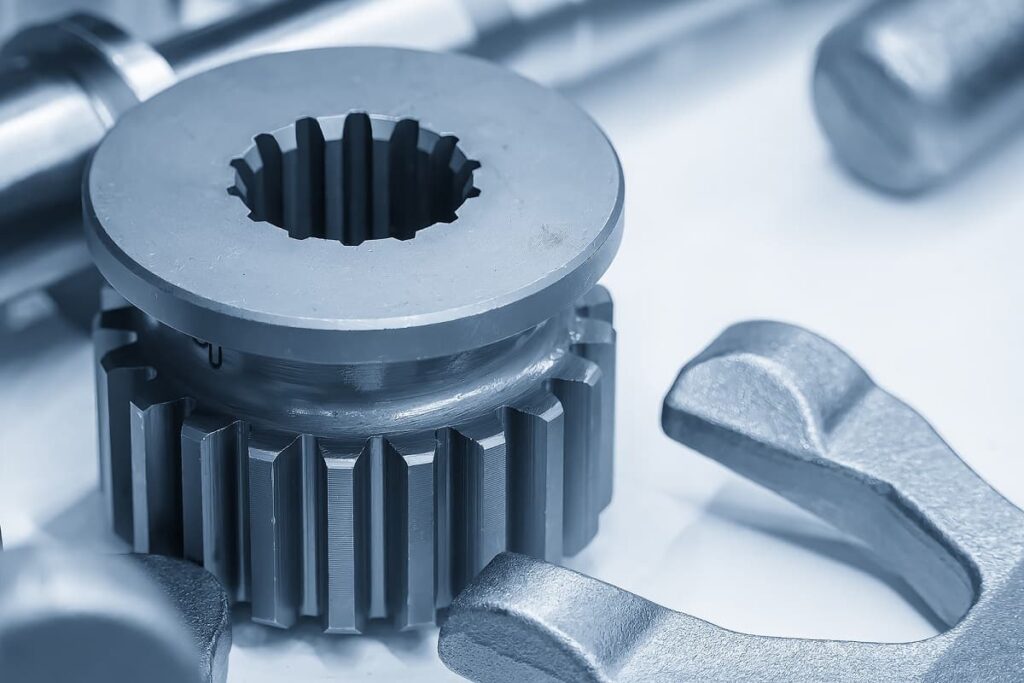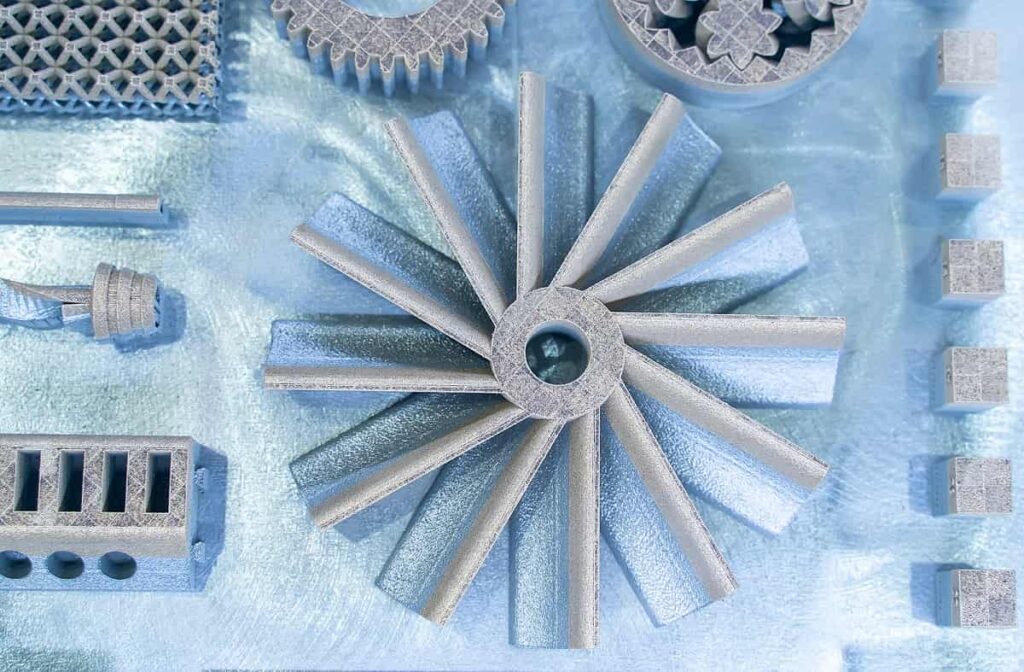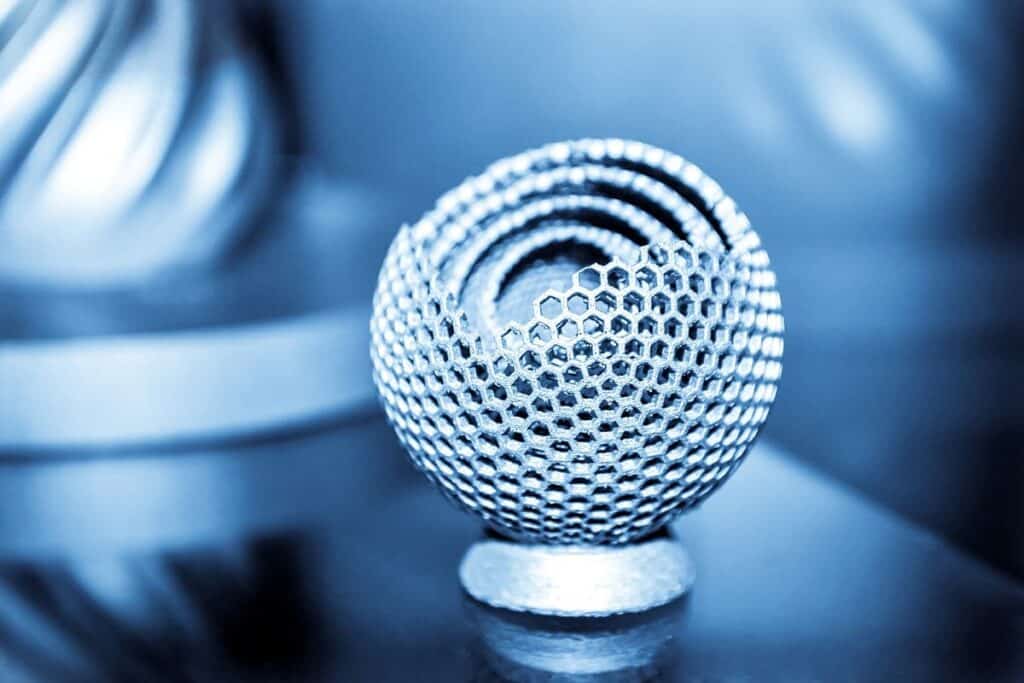Velo3D Stock – Another 3D Printing Metals Stock?
Table of contents

SPACs are starting to form small herds. First, there was Velodyne and all the LiDAR stocks that followed it. Now, 3D printing metal stocks are forming a clique. First, Desktop Metal, then Markforged, and now Velo3D, a company we first came across back in 2017. Back then, they were operating under the radar, and today, they’re flaunting their assets in a glossy SPAC deck. Velo3D plans to merge with JAWS Spitfire Acquisition Corporation (SPFR) making it the third 3D printing metals company that’s gone public using a special purpose acquisition company (SPAC).
About Velo3D Stock
Founded in 2014, San Francisco startup Velo3D has taken in around $150 million in funding from names that include Khosla and SpaceX, a company we just covered in our recent piece on reusable rockets. They mention SpaceX a lot in their deck, and that’s because the fine print found under “Risk Factors” tells us that a substantial portion of Velo3D’s revenue is processed through a single customer, SpaceX. It goes on to say:
Approximately 30% and 70% of its revenue was derived from sales through SpaceX for the fiscal years 2020 and 2019, respectively.
Here’s what those revenues look like:

If you think Elon Musk would be a harsh boss to have, just think about how difficult being his vendor would be. The fact that Velo3D is working so closely with SpaceX is a double-edged sword. Rare is the case we would ever invest in a company that derived a sizable chunk of revenues from a single customer, and 30% sits right on that threshold. It’s good to see that percentage declining over time. Ideally, we’d like to see no more than 10% of revenues coming from a single customer.
In perusing Velo3D’s SPAC deck, there are various gems of wisdom to be found. Their technology is said to be “critical for SpaceX’s most efficient and challenging engine.” Velo3D is focused on “high value parts” and can produce them at a complexity that no other vendor can. Maybe that’s why they claim to have “the strongest intellectual property portfolio in metal additive manufacturing.” They’re not just about space stuff either. The deck says that each of the below four segments contributed between 15-35% of 2020 revenues. (We highlighted the customer names that were noted elsewhere in the deck.)

Velo3d has developed a full-stack solution – planning and design software, a metal 3D printer, and the quality control processes to go with it. Their method of 3D printing – SupportFree Powder Bed Fusion – is superior to their competitors because they don’t use supports during the print process.

Velo3D’s latest printer – the Sapphire XC – will be available this year and able to print products that are 5X larger and 3X lower cost. Around 80% of Velo3D’s 3D printer production is performed by contract manufacturers – good because it creates an asset-light business, bad because you can’t control quality and you don’t have a closed-loop production process you can learn from.
Some additional information can be found in the deck about competition in the “high value parts” space. Here are the powder bed fusion companies they list with accompanying market shares for high value parts:
- GE – 24%
- EOS – 19%
- SLM – 12%
- Renishaw – 9%
- TRUMPF – 7%
- 3D Systems – 4%
- Velo3D – 3%
(Note that Desktop Metal was rumored to be looking at SLM for a possible acquisition.)
Lately, it’s been hard to ignore how metal 3D printing is taking hold in the space industry. Let’s talk about that a bit.
3D Printing Metals in Space
Three years after the purchase of their first Velo3D 3D printer, SpaceX has now purchased 22 of them. The Head of Additive Manufacturing over at SpaceX thinks that Velo3D is “at least five years ahead of any competition,” of which there is plenty. You may have noticed that 3D printing is becoming increasingly associated with space stuff. You’ve got numerous space companies 3D printing rocket engine components, and the world’s largest metal 3D printer is printing entire rockets. You also have the most renowned thematic ETF firm backing up 3D printing as a way to play space.
ARK Invest’s long-awaited space ETF is like a Tinder date that shows up about 30 pounds overweight but driving an Aston Martin V12 manual. Maybe they also have a good personality, and you can get past the whole “I just have big bones” thing for a bit. But you know deep down inside that this isn’t something you want to hold onto for a time period measured in decades.
The ARK Space Exploration & Innovation ETF (ARKX) looks nothing like anyone imagined, but that’s a topic for another article (looks like they’re using a similar approach to what Morgan Stanley did), but today we want to point out how the second-largest holding in ARK’s space ETF is actually ARK’s 3D printing ETF.

That’s the extent to which they believe that “the 3D printing industry” is contributing to “the space industry.” (We’re using quotes in both cases because neither are actual formal industry classifications, which is why you’ll see so much disagreement about what stocks belong in each.)
To Buy or Not to Buy
Finally, we’re starting to see some rationality on exhibit from SPACs. If institutional investors are doing a deal around $10 a share – the price most SPACs go public at – then that’s the price retail investors should pay. Right now, you’ll only pay a 3.2% premium for shares of SPFR. Technically, you should pay less than that amount because the deal hasn’t even gone through. Not to mention, there’s no guarantee the SPAC was fairly priced, to begin with. That’s why we’re largely avoiding SPACs and Velo3D gives us no temptations.
One of our readers recently asked a good question. If you buy shares of a SPAC before the deal is announced, or immediately after, or anytime thereof, does the owner of those shares need to do anything when the deal goes through? The answer is no. Provided the deal goes through (we haven’t heard of one that hasn’t), then the shares will automatically convert to shares of the new company and the ticker will automatically change over. In the case of the Velo3D SPAC, the ticker will change from SPFR to VLD when the deal closes (it’s expected to close in the second half of this year).
If a SPAC deal doesn’t go through, you’ll need to subtract fees and penalties from the pile of cash and the value of the shares will reflect what’s left. It’s hard to see more than 20% eaten up by a bad deal which means you’ll always have the downside “support” which acts as a hedge. Back in the olden days (six months ago), you could buy a SPAC’s shares before a deal was announced, then sell them to the wankers over at Robinhood for a quick +70% premium after just a few months. That’s not a good idea now because the music is stopping.
Conclusion
With three metal 3D printing stocks available now for retail investors, you could easily hold all three. We much prefer to try and find the metal 3DP stock with the least amount of risk and hold that. We really like how Desktop Metal plans to consolidate the metal additive manufacturing space (and they have been), and we’re also glad we decided to recoup the majority of our cost basis when shares soared to the moon. For now, we’re content with letting the dust settle and then taking another comparative look at all three when they’ve filed some proper documents with the SEC.
Want to see which three 3D printing stocks we’re holding? Become a Nanalyze Premium annual member and find out today.

Sign up to our newsletter to get more of our great research delivered straight to your inbox!
Nanalyze Weekly includes useful insights written by our team of underpaid MBAs, research on new disruptive technology stocks flying under the radar, and summaries of our recent research. Always 100% free.
















The fact they have SpaceX as a customer indicates they are very good as SpaceX has very high standards: they would chose only outstanding supplier. Revenue from SpaceX may be declining due to fact Musk likes doing a lot of things in house (vertical integration).
It’s important to have the best 3d printed rocket motors that money can buy when they keep exploding.
Maybe that’s why they keep exploding.
According to the deck SpaceX has 22 Velo3D printers so likely they’re getting some regular use out of them.
“Elon wanted to buy Velo3D, they didn’t want to sell, so we had an opportunity to take them public,” Sternlicht said in a CNBC interview on Wednesday. He added that Velo3D “could even get acquired because they are the probably the leader in their field in an area they can only serve.”
That’s apparently just fine with ARK Invest’s Cathie Wood, whose ARK Autonomous Technology & Robotics ETF (BATS:ARKQ) targets 3D printing firms. That fund recently took a position in Velo3D, buying 733,313 shares of SPFR stock.
Provided that’s true it’s an interesting side note. (We removed the link to the InvestorPlace article that came from because no links in comments.) As we said in the piece, we’ll be waiting for some dust to settle before taking a look across all three 3D printing metals stocks. Tough to compare glossy SPAC decks.
Small perspective: Velo3D’s technology is solid as a rock and is light years ahead of the competition.
No-one comes close to the quality of the builds, not needing supports and the internal density of the prints before HIPing. (After HIPing, the parts are comparable to cast in density.)
I was honored to work there for a couple of years and worked with some of the smartest scientists and engineers imaginable.
Desktop Metals printers are good if you want a fork but if you need to print a functional rocket engine, Velo3D is the only game in town.
Cheers for that Ben. Your experience working there certainly gives you a valuable perspective. We’ll see how this translates to revenue growth for Velo3D. We’re also keen to see how Desktop Metal manages to aggregate a very disparate space.
@Ben B : Velo3D is a screaming buy. I think I will increase my position.
There is no such thing as “a screaming buy” ever. If there was, 95% of professional fund managers wouldn’t be falling on their faces trying to beat a simple benchmark.
Latest check: ARK now owns around 10% of Velo3D. It reached its target position size and it is no longer buying.
No significant changes in share price, ~$10. Not surprising considering the deal is still to be completed (H2 2021).
So I expect the price to move up on the news of deal completion later this year.
The transaction is expected to provide around $500 million in cash proceeds for VELO3D to continue its growth.
—
Good point. The deal has yet to be completed. And that’s not guaranteed to happen. We’ll take another look once that’s cemented.
SpaceX is building a new factory in McGregor for Raptor 2.0 sea level engine production. The target engine production rate is 1000 engines per year. They want to radically reduce cost of production. Currently one Raptor 1.0 engine costs around $1M and they want to reduce that cost long term to $1000. That huge cost reduction could only be achieved by using much more 3D printed parts.
So my guess is they will use a lot of Velo3D machines in the new factory.
That would raise risk for Velo3D stock – customer concentration risk. You never want to be holding a stock that’s over reliant on a single client for success.
2021 Q3 revenue: $8.7M
2021 revenue estimate: $26M
2022 revenue plan: $89M (as per latest company presentation).
Market cap: $1.4B
Share price near 52 week low: $7.8.
Forward P/S ratio using planned 2022 revenue is 15.7.
So Velo3D looks very attractive now.
Quite a few SPACs are near their 52-week lows, a number that continues to slide over time. The new Velo3D 52-week low is now $6.16. That doesn’t mean they’re an attractive investment.
We’re probably due for another piece on Velo3D assuming they’ve filed some decent documents with the SEC. We’ll add this to our research queue.
I noticed ARK keeps buying Velo3D this month and in many previous months since March 2021.
Their position is: $37.75m They slowly keep building their position.
Right now the share price is $5.25. This month (20 days) it fell 33% ..
Market cap: $983.6M. Forward P/S ratio using planned 2022 revenue is 11.
We have an update on 3D printing metal stocks in our research queue so we’ll likely touch on Velo3D soon.
Q1 2022 results: revenue: $12.2M. Revenue guidance for 2022 confirmed: $89M.
Current market cap: $248M.
So we have P/S ratio: 2.8. For such a high tech stock that is extremely low. Share price: $1.35 – very near 52 week low: $1.31.
For comparison: share price in January was $7.8 and at that time there was the same guidance for 2022: $89M
So the share price fell 83% while financials looking good: for the last 6 months revenue grew 40% and guidance is well on track.
Velo3D looks like a genuine bargain now.
It does, but so do lots of other stocks. As you know, too small to be on our radar. Lots of investor interest though so we’ll keep an eye on them. Thank you for the update!
In the last 4 days Velo3D is up +40% !
Short term price movements like that mean absolutely nothing to long term investors.
Q2 2022 revenue grew to $19.64M, compared to $7.15M in Q2 2021. VLD shares traded up +42% on Wednesday.
Current price: $5.45. That is very far from 52 week low in early May: $1.28. Market cap is $984M. P/S=12.5.
Saw the pop, thank you for the comment!
-33% today after Q3 results. Updated 2022 revenue guidance of $75-$80M (before it was $89M) – result of supply chain disruptions causing Q322 shipment delays and potential Q422 impact.
Nice concise update man!
Revenue guidance for 2022: $75-80M.
P/S ratio is around 5. In the past it was 42 as indicated in another article.
So now Velo3D has very sensible valuation comparing to previous year. Velo3D deserves to be given a serious consideration ..
Too small a firm at $360 million market cap but popular so we’ll likely take another look at it sometime in the future.
The first picture of Turbines is produced on Farsoon Metal 3D printer FS421M. Please add Farsoon credit under the image. Thanks!
All teaser images used here at Nanalyze come from BigStockPhoto based on a paid license agreement. If you have some point of contention to raise about these images, raise it to BigStockPhoto please.